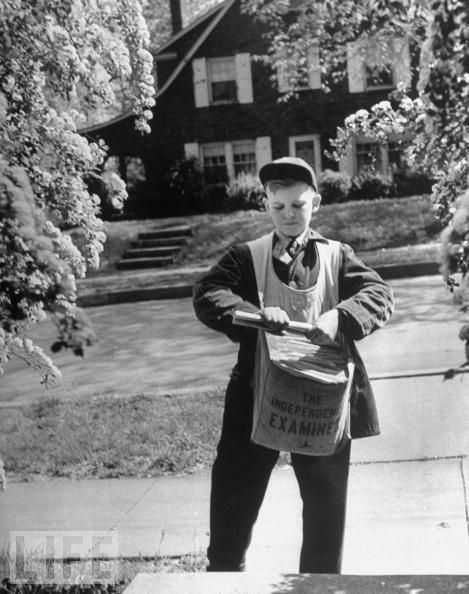Black, White and Read All Over

Perhaps the most consistent irony about our mass media is that it’s curated, edited, customized, or otherwise filtered to such a degree that it is not mass at all. We hear only the news that is meant for us, and we scarcely stop to think about the news we’re not hearing. The recent mid-term elections seemed to me to be basically about different news being created for the benefit of different communities. It’s tempting to think of this as a thoroughly modern phenomenon, a by-product of the speed with which news circulates these days. But my recent foray into old travelogues and historical fiction has really shown me that the way we receive and interpret the news hasn’t changed very much. Take Beloved, for instance. (I’ll be using this book in one of my classes next quarter, which is why it came to mind.) Late in the novel, Toni Morrison writes about how two different racial communities in nineteenth-century Cincinnati perceive and interpret a very specific piece of news. The scene takes place about two-thirds of the way into the novel, when Paul D., a former slave, finds out a secret about Sethe, the woman he loves. Stamp Paid is the man who brings the press clipping (with this secret) to Paul:
Paul D. slid the clipping out from under Stamp’s palm. The print meant nothing to him so he didn’t even glance at it. He simply looked at the face, shaking his head no. No. At the mouth, you see. An no at whatever it was those black scratches said, and not to whatever it was Stamp Paid wanted him to know. Because there was no way in hell a black face could appear in a newspaper if the story was about something anybody wanted to hear. A whip of fear broke through the heart chambers as soon as you saw a Negro’s face in a paper, since the face was not there because the person had a healthy baby, or outran a street mob. Nor was it there because the person had been killed, or maimed or caught or burned or jailed or whipped or evicted or stomped or raped or cheated, since that could hardly qualify as news in a newspaper. It would have to be something out of the ordinary—something whitepeople would find interesting, truly different, worth a few minutes of teeth sucking if not gasps. And it must have been hard to find news about Negroes worth the breath catch of a white citizen in Cincinnati.
There is some back-and-forth as Stamp tries to convince Paul D. to look at the article about Sethe in the paper, even as he’s trying to justify for himself why no one warned Sethe that a slave catcher was headed toward her house.
Stamp Paid looked at him. He was going to tell him about how restless Baby Suggs was that morning, how she had a listening way about her; how she kept looking down past the corn to the stream so much he looked too. In between ax swings, he watched where Baby was watching. Which is why they both missed it: they were looking the wrong way—toward water—and all the while it was coming down the road. Four. Riding close together, bunched-up like and righteous. He was going to tell him that, because he thought it was important: why he and Baby Suggs both missed it. And about the party too, because that explained why nobody ran on ahead; why nobody sent a fleet-footed son to cut ‘cross a field soon as they saw the four hourses in town hitched for watering while the riders asked questions. Not Ella, not John, not anybody ran down or to Bluestone Road, to say some new whitefolks with the Look just rode in. The righteous Look every Negro learned to recognize along with his ma’am’s tit. Like a flag hoisted, this righteousness, telegraphed and announced the faggot, the whip, the fist, the lie, long before it went public.
Some pay attention only to what’s in the newspaper, to declarations from police officials and accompanying pictures; others have to keep their ears trained on the noises coming from the road, and then ‘telegraph’ them elsewhere. The juxtaposition is so skillfully weaved into the scene that I didn’t notice it the first time I read it. (Nor did I realize that the character of Sethe was based on a real-life runaway slave, who attracted the attention of Ohio newspapers because of what she had done. One of the reasons I really enjoyed re-reading the book was because of all the things I’m noticing now that I didn’t notice years ago.)
Photo credit: Alfred Eisenstaedt/Time & Life Pictures/Getty Images